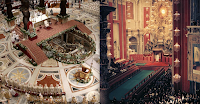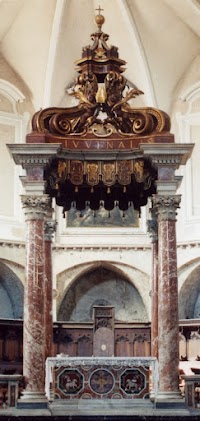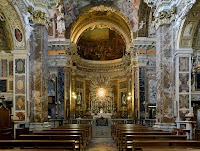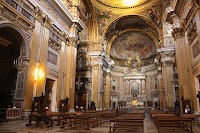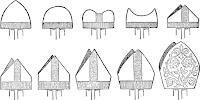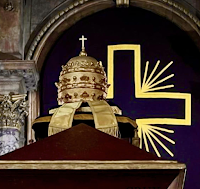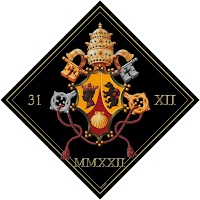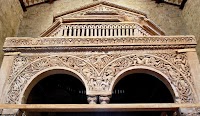_-_Coro_dei_Frati_-_Marble_entrance.jpeg) If Rome is a city of the baroque and Florence that of the Renaissance then Venice might be considered the gothic sister of this trio -- so much so that it even has its own unique brand of it which is called "Venetian gothic" reflecting the fact that it has its own…
If Rome is a city of the baroque and Florence that of the Renaissance then Venice might be considered the gothic sister of this trio -- so much so that it even has its own unique brand of it which is called "Venetian gothic" reflecting the fact that it has its own…
Our Advertising Partners
-
The global pandemic has disrupted the normal celebration of the Holy Week in Spain, where, for a second year, the government has forbidden t...
-
We live in a very visual, image-based culture and, what's more, there is always lots of curiosity around the matter of traditional papal...
-
Above is an image of Pope John XXIII after his death in 1963, dressed in red vestments for burial (the arms on the front of the chasuble app...
-
The mitre is one of the most recognizable symbols of prelates of the Church, specifically of bishops up to the Roman pontiff himself -- thou...
-
The papal blessing known as the Benedictio Coram Populo, or more commonly as the Urbi et Orbi (to the city [of Rome] and to the world) bless...
-
To the person who simply enjoys beautiful art and architecture, distinctions like "baroque" or "rococo" might seem overl...
Blog Archive
-
▼
2023
(257)
-
▼
January
(22)
- Venetian Gothic: The Basilica of Santa Maria Glori...
- The Renaissance High Altar of Santa Maria la Nova ...
- What If the Liturgical Movement Had Stayed On Track?
- Before and After: The Arrangement of the Papal Thr...
- A Ciborium of the Seventeenth Century Style
- Counter-Reformation Churches of Rome: Santa Maria ...
- Counter-Reformation Churches of Rome: Chiesa del S...
- The Neoclassicism of the Liturgical Arts of Cardin...
- Counter-Reformation Churches of Rome: Sant'Ignazio
- Introducing the Architectural Firm, Franck and Lohsen
- Counter-Reformation Churches of Rome: Santa Maria ...
- The History and Development of the Mitre
- The Playfulness of Rococo Liturgical Architecture
- The History and Forms of the Christian Altar: The ...
- Monumental Catafalque for Benedict XVI at FSSP in ...
- Funerary 'Obiit' Rendition of Benedict XVI's Arms ...
- Traditional Ceremonies Surrounding the Death of a ...
- Four Vestments on Epiphany Featuring the Adoration...
- Minor Roman Basilicas: Santa Maria in Cosmedin
- The Romanesque Altar and Ciborium of the Abbey of ...
- Exceptions from the Rule: Coloured Mitres
- Nigra Sum Sed Formosa Filiae Ierusalem: The Black ...
-
▼
January
(22)
Donate
Copyright ©
Liturgical Arts Journal | Powered by Blogger












_-_Interno_017.jpeg)

